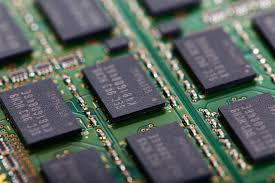Flash Based Array Market Pain Points Hindering Broader Enterprise Adoption
Flash based arrays (FBAs) have revolutionized enterprise data storage with their superior speed, reliability, and energy efficiency compared to traditional hard disk drives. These storage systems are increasingly preferred in environments that demand high performance, such as cloud computing, artificial intelligence, and real-time analytics. However, despite their advantages, several pain points continue to hinder the widespread adoption of FBAs. These challenges impact cost-effectiveness, scalability, integration, and operational efficiency, limiting their full flash based array market potential.

High Initial Capital Investment
One of the most significant barriers to entry in the flash based array market is the high upfront cost. Although the price of flash storage has declined over time, it remains substantially higher than traditional spinning disks. For small to mid-sized enterprises, this cost differential can be a deterrent. Budget constraints often lead organizations to delay upgrades or opt for hybrid solutions that blend flash and HDD storage. This cost issue is particularly pronounced in emerging markets where IT spending is more conservative.
Limited Write Endurance
Flash memory, especially NAND-based flash, suffers from limited write endurance. Each memory cell in a flash drive has a finite number of write-erase cycles before it becomes unreliable. While enterprise-grade SSDs offer higher durability than consumer models, write endurance still presents a long-term reliability concern in high-write environments. Workloads that require constant data logging or transaction updates can degrade the flash cells over time, leading to performance drops and eventual hardware replacement.
Integration with Legacy Systems
Many organizations still rely on legacy IT infrastructure that is not fully compatible with modern FBAs. Integrating flash storage into these environments can be complex, requiring custom configurations, software upgrades, or even a complete infrastructure overhaul. This integration complexity can result in additional costs, longer deployment timelines, and a higher risk of downtime. For businesses that lack in-house technical expertise, the learning curve can be steep and discouraging.
Vendor Lock-In and Proprietary Architectures
Another significant pain point in the flash based array market is vendor lock-in. Many leading FBA providers offer proprietary hardware and software ecosystems, which can limit interoperability and flexibility. Once an organization invests in a particular vendor’s solution, switching to another provider often requires a complete migration—an expensive and time-consuming process. This dependency discourages experimentation and stifles innovation, as customers are bound to a single vendor’s roadmap and pricing model.
Inadequate Data Management Tools
While FBAs are built for speed, not all solutions come equipped with robust data management capabilities. Features such as automated tiering, predictive analytics, capacity forecasting, and intelligent workload distribution are essential in today’s data-driven environments. The absence of these features can lead to inefficient resource utilization, storage bottlenecks, and unnecessary hardware expansion. Organizations often have to invest in third-party tools or develop custom scripts to fill these functionality gaps, adding to the total cost of ownership.
Cooling and Power Challenges at Scale
Although FBAs are more energy-efficient than traditional storage systems on a per-unit basis, large-scale deployments still generate significant heat and power consumption. In hyperscale data centers or high-density environments, managing thermal output becomes a critical challenge. Inadequate cooling can lead to hardware failures, increased maintenance costs, and reduced equipment lifespan. Moreover, the infrastructure required to support high-performance flash arrays—such as advanced cooling systems and redundant power supplies—can be both costly and space-intensive.
Performance Bottlenecks Beyond Storage
Organizations investing in FBAs often expect an immediate and dramatic boost in performance. However, in many cases, the benefits of flash storage are limited by other components of the IT infrastructure, such as slow processors, inadequate memory, or network congestion. Without a holistic system upgrade, the performance of the flash array may not be fully realized. This mismatch between expectations and actual outcomes can lead to user dissatisfaction and skepticism about future investments.
Security and Compliance Concerns
With the rising importance of data privacy and regulatory compliance, flash storage solutions must meet stringent security requirements. While many FBAs offer features like encryption and secure data deletion, not all meet the necessary compliance standards across different regions and industries. Additionally, in multi-tenant environments such as public cloud or shared data centers, ensuring data isolation and integrity becomes a challenge. Any security lapse can have serious legal and reputational consequences, especially in sectors like finance and healthcare.
Conclusion
While flash based arrays offer substantial advantages in speed, efficiency, and reliability, they are not without their challenges. High costs, integration complexity, vendor lock-in, and security concerns remain persistent pain points for enterprises considering flash storage. To drive broader adoption, vendors must address these issues by developing more affordable, flexible, and user-friendly solutions. As the market matures, eliminating these barriers will be key to unlocking the full potential of flash based arrays in the global storage ecosystem.
- Art
- Causes
- Crafts
- Dance
- Drinks
- Film
- Fitness
- Food
- Games
- Gardening
- Health
- Home
- Literature
- Music
- Networking
- Other
- Party
- Religion
- Shopping
- Sports
- Theater
- Wellness


